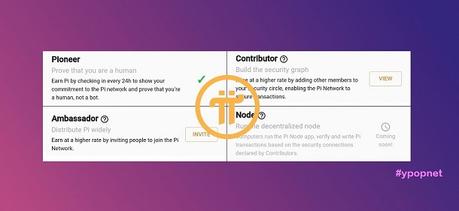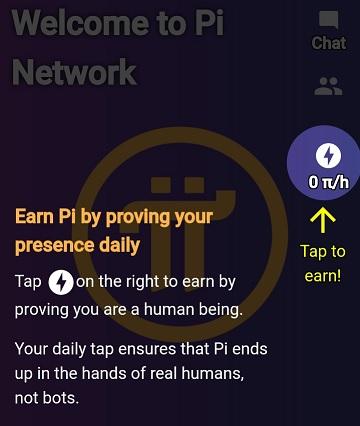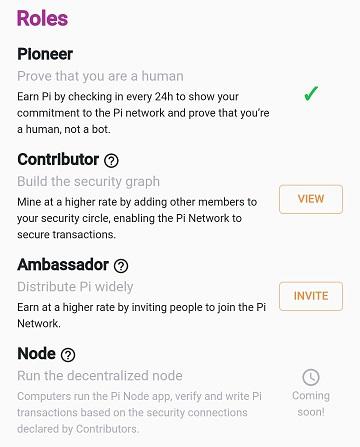
Your role in Pi Network depends on how big is your contribution to the growth of the network; thus, invitation code is required in order to officially sign-up for a new Pi Network account. Signing-up is easy, all you need to do is link your Facebook account to the Pi Network app or use a mobile phone number instead. Make sure you put your real name upon signing up to avoid KYC* (Know-Your-Client) problems in the future. *More about KYC process on a separate blog post.
Since Pi Network is a network built in trust, your role is measured depending on how many new members you brought in to the network. The definitions of every role in the Pi Network can be read below.

The Pioneer
As a Pioneer, you earn Pi by validating your presence every time you sign in to the app. This simple action on a daily basis confirms that you're a human, not a robot and it also confirms your commitment to the network. On the very moment you created your Pi Network account, you already achieved your initial role as a Pioneer. Just make sure you check-in every after 24 hours and click on the lightning icon for continuous mining sessions. In today's formula for computing the mining rate rewards, the number of mining sessions play an important role in order to get higher rewards*. Being aware of this is quite important because Pi Network mining undergoes halving sessions in order to protect Pi coin scarcity.*I will write a separate blog about rewards computation in a separate post.
The Contributor
As a contributor to the network, your function is to build the security graph by providing a list of pioneers you know and trust. Becoming a Contributor allows you to earn more Pi by building a security circle of three to five trusted members. Your role as Contributor will only be unlocked after you've finished three mining sessions as a Pioneer. After 3 days of mining, the security circle icon will appear on your Pi Network app's home screen; only then could you start adding three to five trusted Pioneers to build your security circle.
What are security circles?
Security circles are groups of 3-5 trusted people built by each of Pi’s members. Security circles secure the currency by building a global trust graph that prevents bad actors from executing fraudulent transactions.
While cryptocurrencies like Bitcoin secure their ledgers by forcing miners to burn energy (proof of work), Pi Network secures its ledger when its members vouch for each other as trustworthy. Pi Network’s Contributors vouch for each other by building security circles comprised of 3-5 members they deem as trustworthy. Security circles should be comprised of people you trust not to execute fraudulent transactions. The network’s security circles form a global trust graph that determines who can be trusted to execute transactions on Pi’s ledger.
The Ambassador
As an Ambassador, you help distribute Pi widely. You could actually earn up to 25 percent mining boost bonus on your base mining rate for every Pioneer you bring in to the network.
The Node
As a Node, you help run the decentralized blockchain network. You are a Pioneer, also a Contributor, you use the Pi mobile app and also run the Pi Network node software on your desktop or laptop computer. The Pi node software is the software that runs the core Stellar Consensus Protocol (SCP) algorithm, taking into account the trust graph information provided by the Contributors.

A user can play more than one of the above roles. All roles are necessary, thus all roles are rewarded with newly minted Pi on a daily basis as long as they participated and contributed during that given day. In the loose definition of a "miner" being a user who receives newly minted currency as a reward for contributions, all four roles are considered to be the Pi miners. We define mining more broadly than its traditional meaning equated to executing proof of work consensus algorithm as in Bitcoin or Ethereum.

